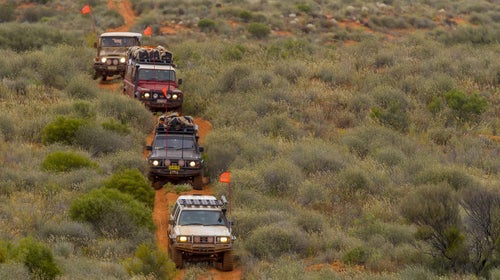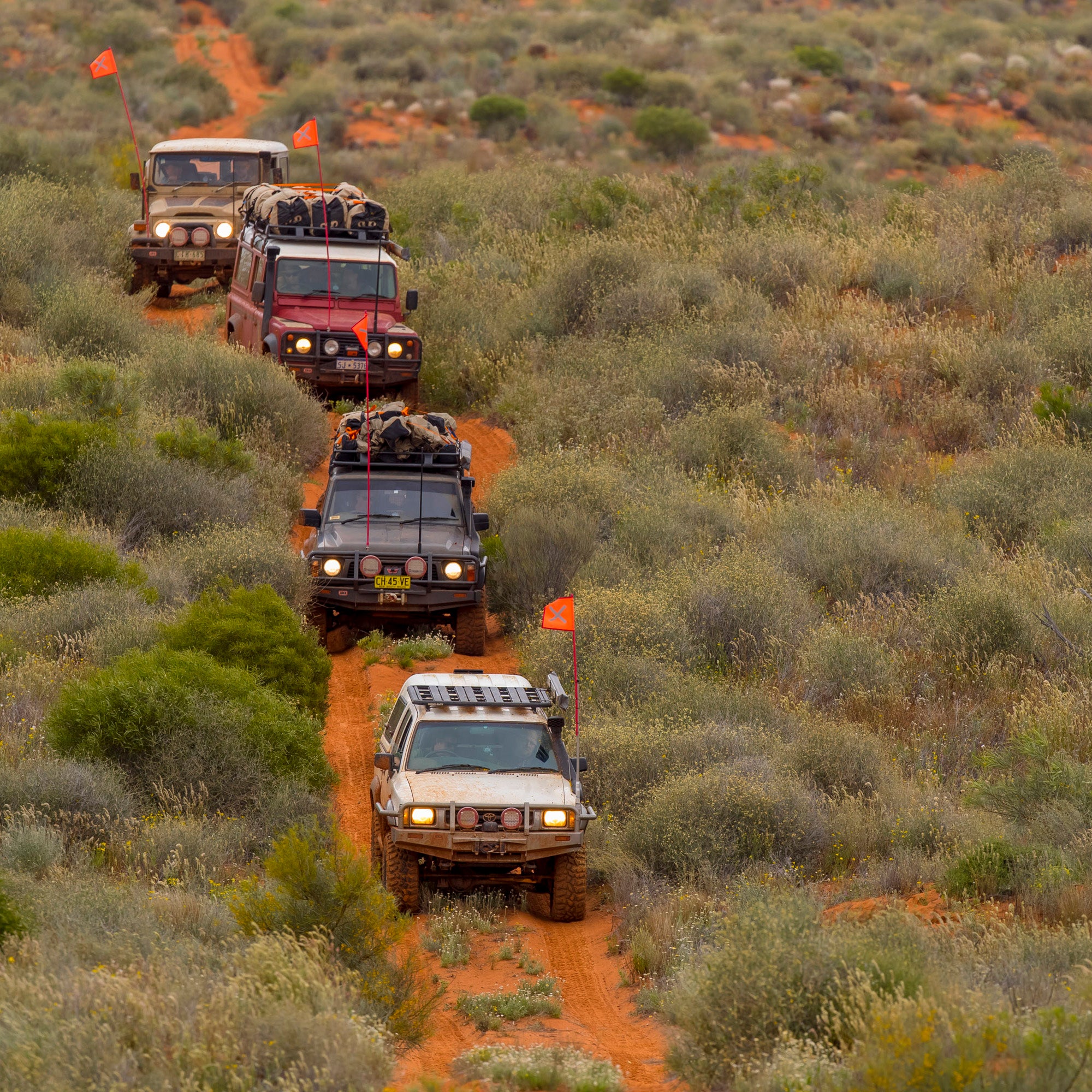Earlier this year, we described overlanding as being like backpacking, but with a vehicle, and we showed you how to build a capable, reliable trail rig for just $10,000. Now, let’s look at what you do with that 4×4. Where should you take it? What do you need to take with you? What happens if something breaks, or you get stuck? How do you know what type of terrain you can tackle? We’ll break all that down below.
Off-Roading Isn’t Really Off-Road
One of the common misconceptions about going off-road is that you just drive anywhere you please, willy nilly. You can’t/don’t/shouldn’t do that. ���ϳԹ��� of specially-designated terrain parks and Off-Highway Vehicle areas you instead stick to designated dirt roads and trails. Not only does this help protect the fragile environment you’re traveling through, but trails are what makes it possible for your vehicle to get places. Even the toughest trucks would quickly be defeated by the boulders, logs, pits, ditches, mud, and trees that surround trails.��
That isn’t to say that driving down a marked trail won’t be difficult and dangerous. Even designated 4×4 trails often contain obstacles that will defeat anything but a highly-modified truck. And, because your 4×4 allows you to cover large distances with relative ease, you’ll quickly find yourself a long, long way from help, potentially with no ability to communicate with the outside world.��
I recently crossed the world’s largest sand dune desert in a group of vintage 4x4s. Australia’s Simpson Desert was only crossed by a European for the first time in 1936, and he did it using a camel. We crossed via tracks laid down by oil speculators in the subsequent decades, and still found it to be an enormous challenge. Way out in the middle of nowhere, even following old Jeep tracks, we faced extreme weather, impassable obstacles, and had to elaborately plan our navigation in advance. And we had to fix the multiple vehicle breakdowns ourselves, carrying the tools and parts necessary to do that. Australia now closes the desert for its summer, in response to the numerous deaths that have occurred there in the past.��
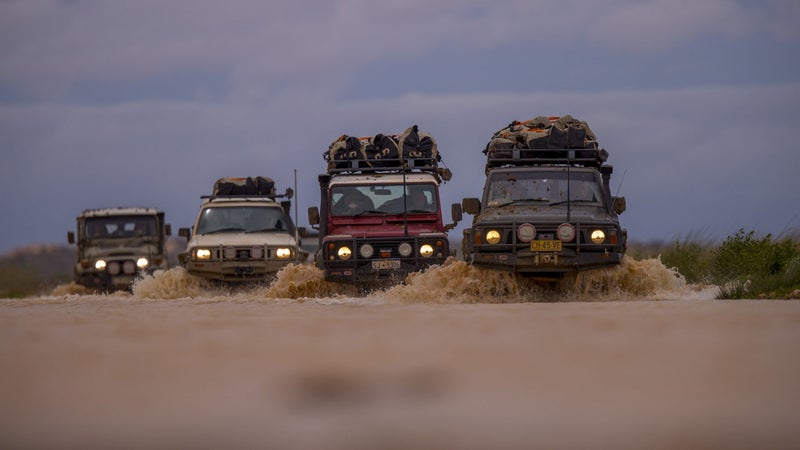
What Terrain Can You and Will You Tackle?
Driving off-road is its own separate skill set—sitting in traffic will not prepare you for the experience. You need to be able to exercise precise control of your vehicle in a wide variety of tricky, constantly changing conditions, and should go armed with the knowledge and tools to recover a vehicle that is stuck, rolled, or otherwise immobilized. Vehicle recovery is its own unique problem, and can often prove as dangerous to human life as it is to your paint.��
The only way to develop the skills necessary is to practice them. Probably the best way to do this is to start small, purchase a cheap, older 4×4, and go play with it in controlled circumstances in the presence of experienced drivers at your local OHV park. Simply taking your brand new Wrangler out on a trail is a recipe for a very frustrating, and very costly, weekend.��
You can also find training classes at the annual overland rally or expo in your region. Local 4×4 clubs are very good places to find like-minded, friendly people willing to show new enthusiasts the ropes. If you already have a vehicle that you want to use, and are excited to get out there, the best advice I can give you is to invite a buddy along who both knows what he’s doing and has his own truck. Taking two vehicles, and a person who knows how to use one, is a great way to add peace of mind and emergency preparedness to any 4×4 adventure.��
Ready to plan a trip? Just looking at a map isn’t a great way to ascertain the difficulty involved. And, off-road, you always have to bear in mind that conditions are constantly changing. A trail that was easy last week could, following a rain storm, become totally impassable. No matter what intel you get beforehand, you have to constantly be examining the trail in front of you, and use common sense to make decisions that prioritize safety. In trickier terrain, it’s a great idea to get out and walk sections first, studying the obstacles before you try and tackle them.��
Doubt your ability to make it over or through something? Either find a way around that obstacle, or turn around. It's not worth losing your truck or your life.��
Having said that, there are ways to get a general sense of a trail’s level of difficult ahead of time. In high-use off-road areas, there may be the same green/blue/black classification system used at ski resorts. Headed to the backcountry? Many 4×4 forums have sections for trip reports and trail conditions. There, you’ll often find detailed photos, first-hand impressions, and advice on any unique challenges you may face. Keep the age of that material in mind, and realize every person has their own unique opinions, but these forums are gold mines for trail info.��
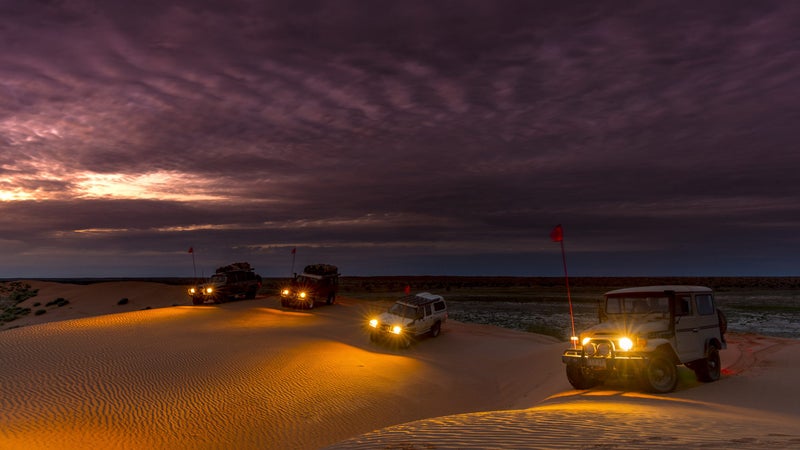
What Type of Vehicle Do You Need?
The answer is different for every person and every trip. But you don’t need a highly modified Wrangler just to go car camping down a dirt road.��
We’ve previously showed you how to build an ultimately-capable off-road vehicle for just $10,000. That’s around what I paid for my highly-modified Land Rover, and it can go absolutely anywhere, in comfort. Last year, I used a lightly-modified, current-generation Subaru Outback to support all my outdoor adventures, taking it places many people didn’t deem possible.��
If you already have a a vehicle you want to use, honestly evaluate its capability and your experience, and plan trips through terrain you can handle, with a margin for safety. On good, all-terrain tires, an all-wheel drive Subaru or similar crossover can easily tackle dirt roads, even if they have rough sections. But, you’re not going to climb steep hills, and you’re not going to cross big rocks, or make it through deep mud. To handle those conditions, you’ll need a true four-wheel drive truck. We’ve previously explained how the two drive systems differ in detail.��
What vehicle modifications do you need to go further? Too often in this country we mistake playing around in OHV parks for true overland travel. While both pursuits require modifications, the goals for each are pretty different, resulting in vehicles that don’t really compare. Giant, lifted Jeeps might be awesome at rock climbing, but trying to get eight hours down a highway in one would be nearly impossible. Instead of gargantuan lifts and giant tires, vehicles built for overland travel need to prioritize practicality and livability across long trips, in varied terrain, including pavement.��
The vehicles you see here achieve that magic overland formula: beginning with an honest four-wheel drive truck equipped with a low-range transfer case, lifts of between one and three inches enable you to fit larger, but not extreme, 31 to 33-inch tires. Locking differentials enable them to travel through soft stuff without getting stuck. Steel bumpers and rails protect the bodies from damage, while improving angles and allowing you to fit equipment like driving lights, winches, full-size spare tires, and extra fuel. Inside, they’re fitted with convenience items like air compressors, tool storage, and onboard fridges that enable you to keep food fresh for long periods. makes the highest quality stuff around, and can likely outfit your entire vehicle, even if it's an older model.��
How far you want to go down that path of modifications is obviously determined by your budget, and desire for conveniences while traveling. If you’re starting from scratch, I’d advise you to set a budget that includes all the modifications you want to make, then see how much that leaves you to spend on the vehicle itself.��With that approach, buying a cheaper truck and making a lot of modifications almost always makes more sense than starting with something fancy and only making a few.��
As you start traveling further afield, in more dangerous conditions, through more challenging terrain, you’ll come to understand and appreciate the idea of a vehicle you can walk away from without experiencing financial ruin. Going places that may experience flash floods or mud slides, tackling terrain that may destroy your truck, and visiting places where it runs the risk of being stolen are all more of a goal here than driving something you have to make payments on.��
What You Need to Take with You
By choosing to travel by truck, you’re accepting the need to be able to maintain and repair that truck on the trail. If you need to rely on AAA to fix a flat tire, then I’d advise you to stay on paved roads. What tools and spare parts you end up carrying with you are based on your experience fixing things, the needs of the vehicle you’re driving, and what its common wear items and broken parts are.��
If I was to try and make you a list of every socket or fuse you should pack, I’d fail. Every vehicle is unique, and every one of us has our own wants, needs, and experience level working on stuff. But every vehicle’s weakest link is also its most important component: the tires.��
Tires are going to be the most frequently damaged part of your truck, but are also the most important part. Start with good tires which will strongly resist punctures while giving you excellent traction—I recommend the for virtually every use and user; they're as good off-road as they are on. Then add the stuff you need to fix those tires. At a minimum, you’ll need an , , and an of some kind. I also carry for when I’m feeling lazy, and for when I need the ability to quickly and easily alter tire pressures on a longer trip. You don’t really need two full-size spares; one, plus this significant ability to effect repairs is plenty.��
After your tool kit, and all that tire stuff, you’ll need to consider basic human needs like water (one-gallon per-person, per-day, minimum), beer, shelter, and food. This is actually the easiest part of all this; a big part of the reason why 4×4 camping is so fun is that you can take so much with you compared to human-powered forms of travel. Go nuts, be comfortable, and cook nice meals.��
You also need to consider fuel range. Expect your average fuel economy to halve in dirt, and plan accordingly. You either need to plan routes that include adequate gas stations, or carry extra in . Always have more fuel with you than you think you might need.��
How Do You Carry All This Stuff?
It’s actually dangerous to keep stuff in any vehicle if it’s not strapped down. You remember those old buckle-up ads where a baby turned into a sumo wrestler during a crash? The forces involved are so huge that even a little kid can turn into a deadly projectile. Well, imagine that with a 20 Lbs air bottle, and all its sharp pointy bits. Off road, it doesn’t take a crash for something like a Hi-Lift jack to cause major damage to your truck, or its human occupants. Even just a washboard section of dirt road can have cargo bouncing all over. That’s why everything in and on your vehicle needs to be strapped down, bolted on, or secured in some way.��
I carry my tools and spare parts in a large Pelican case, attached in my trunk with a ratchet strap. Small, loose items go in a big drawer, my air bottle and fire extinguisher are connected to the frame with , and I carry my camping gear in a big Rubbermaid that also gets a ratchet strap on it. On my roof rack, my Hi-Lift, shovel, and are bolted-on securely. Jerry cans lock down with big metal straps, and I use a ratchet strap to attach anything else (like firewood, or my radical rooftop-tent-on-the-ground setup) securely as well.��
Before you throw anything in or on your truck, first consider how you’ll attach it. There are many, many aftermarket roof racks, bumpers, drawer systems, and similar, all designed to make it easier and safer for you to take all this stuff with you. Plan on buying some.��
And don’t forget .��
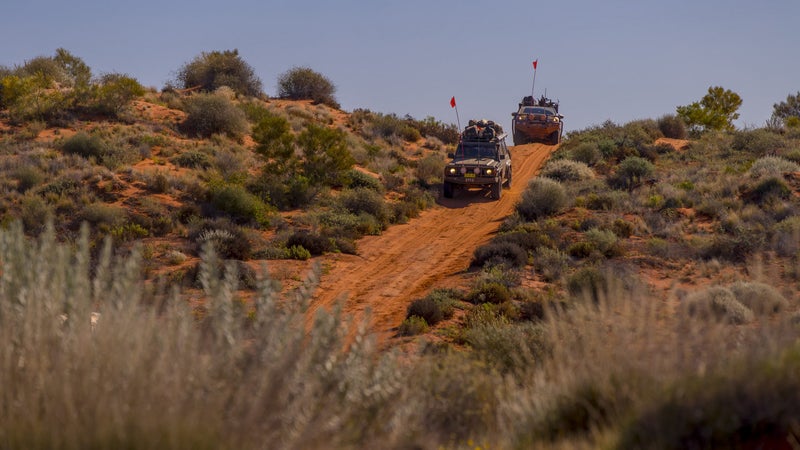
How Do You Find Trails, Campsites, and Destinations?
I’m about to embark on an overland trip to a remote beach in Baja for my annual outdoor thanksgiving, and am being joined by 15 to 20 friends, many of them travel rookies. I’ve never been to this location, or even area before, but I’m absolutely sure we’re going to have a good time. How? Planning.��
When I’m planning a trip, I first start with a rough idea of where we want to go. Whether it’s Big Sur, Baja, the Outback, or Death Valley, the idea is to build a trip in that area which is fun, has the right amount of challenge, and which includes the hot springs, views, beaches, or other features that make it all worthwhile.��
I find that stuff by asking more experienced friends, trawling forums, or spending hours flying around in Google Earth. Then I pull out topographic maps of the area and look for the dirt roads and trails that connect it all, doing rough mileage estimates that leave plenty of margin for error when it comes to fuel range.��
Next, I try to find as much information about those trails and roads online as I can. Some may be included in Google Streetview and there will be some geotagged photos in Google Earth, but forums remains the best possible source for first-person reports, often from experienced 4×4 types.��
For navigation, nothing beats the size and reliability of an iPad Mini running the . The stuff you use to navigate on-road will not work off, and Hema has good route discovery functionality too. Just use a to secure the iPad in your windshield.��
One lesson I’ve learned doing this is how important it is to be flexible. You might plan to visit a beach that looked ideal in your research, but proves to be a crowded, trash-ridden mess in reality. Weather is always a factor, vehicles break, and trails wash out. Because it can be hard to find good destinations, and stuff like fuel range is a factor, I now try to plan a solid plan B. Doing so might save your trip.
Figure out how many nights you be out, pack enough water, beer, and food, and you're good to go.��
